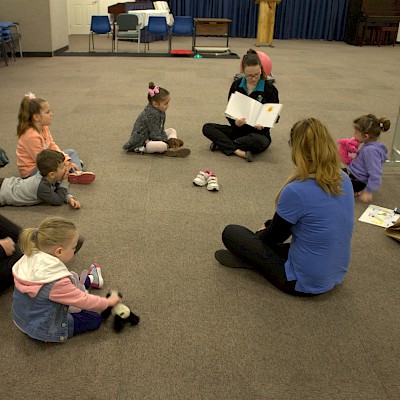By Rupert Peake
Becoming a Speech Pathologist is an enjoyable, demanding and somewhat fleeting learning journey. Students have different options by which to gain speech pathology certification in Australia, but all must complete at least four clinical placements. In each placement the student must progressively demonstrate competency in different areas of practice. I, alongside, the majority of my peers regard placement experiences as the most enriching and beneficial learning opportunities available at university. There are also additional benefits to the clinic, the clients and the Speech Pathologist supervising the student.
There are two ways that students can gain a speech pathology qualification in Australia: an undergraduate four-year degree, or a postgraduate (Masters) two-year degree. A Masters degree requires the prior completion of a 3-4 year university undergraduate degree. This pathway to a qualification is the same for the majority of allied health professions, such as for occupational therapists, who might be working with a child alongside a speech therapist at Talking Matters. I have undertaken the undergraduate four-year degree, of which I’m currently in my fourth and final year.
During my four years at university, I have studied a multitude of different topics relating to speech pathology practice (refer to figure 1.0), as well as some general health topics like psychology, anatomy, physiology and audiology. These disciplines involve principles applicable to all areas of speech pathology practice. I know - there is a lot to learn. As with most topics, it seems that we cram information in the space of thirteen weeks with assignments and tests ahead of that one dreaded final exam. Sometimes it feels like all the information disappears out the other ear once the exam is over, but that’s probably really just the huge feeling of relief.

The closest thing we get to real life examples during University classes is going through different hypothetical cases. For those who don’t know much about the “case-based learning approach”, students are put into groups and are given a case in which they have to work through information, before answering questions on the case. We use knowledge from lectures and tutorials to answer the various questions about the case. When students can’t answer questions, a gap in their knowledge is identified. In turn, that area becomes something that student will need to research further. Of course, there will always be a lecturer or tutor there to help students when Google just refuses to give the answer you're looking for. Just kidding.

Although learning in this manner is extremely valuable to supporting the lifelong learning journey, it does not come close to the deep and enriching learning environment that I have experienced whilst on placement: there are only so many YouTube videos a student can watch of people roleplaying the clinician and client before it becomes manufactured and cheesy. More importantly, university, text books and YouTube videos can’t teach students some of the real word clinical skills needed to practice as a high quality, empathetic and adaptable clinician. These are skills that can only be developed through placements.

Australian research shows that there are many benefits for private practices hosting student placements. All of these benefits can contribute to better services which will ultimately benefit your child and the future children. Some of these benefits taken from the research include:
- Increase the amount of university programs nationally resulting in increased student numbers and more access to speech pathology services for clients
- Ensuring clinicians stay up to date with the latest research and therapies. This is because the students have wider access to clinical research.
- Prompting clinicians to reflect and reason through own practice scenarios
- Keeping clinical educators and other practicing clinicians up to date with theories and evidence
- Assisting the practice with workload management, once student is competent
- Supporting the future of the speech pathology profession
- Developing and updating new resources (e.g. client manuals, brochures, education programs and therapy resource materials) benefiting clients
- Developing staff clinical reasoning skills.
- Contributing to the maintenance of good standards of clinical practice
My view, and the view supported by the clinical literature, is that the most important skill a clinician can obtain is an ability to create and constantly build rapport with clients and families/friends. This creates a nurturing and positive learning environment, and ultimately benefits the client as they feel comfortable to work alongside you and learn new skills. Students don’t get to develop this skill in a lecture that is showing them the best way to teach a /s/ sound. Another important skill students don’t develop during lectures or PBLs is flexibility. There’s only so many times you can ask and teach a child an /s/ sound, however, if they aren’t comfortable with you or don’t understand, it can get a little awkward.


Student placements are a critical component of speech pathology education and training. These placements ensure that students are competent clinicians by the time they finish their tertiary studies. Moreover, these placements offer unique opportunities to build an understanding of client centred practice and ethical service delivery. This in turn creates committed and highly skilled graduate speech pathologists which further helps to maintain high industry standards and the future of the speech pathology profession.
References:
- McAllister, L. and Lincoln, M. (2004). Clinical Education in Speech Language Pathology. Whurr: London.
- Thomas, Y. et al. (2007). Benefits and challenges of supervising occupational therapy fieldwork students: Supervisors’ perspectives. Australian Occupational Therapy Journal, 54, pg2-1
- Sokkar, C., McAllister, L. (2015). Diversifying student placements: Understanding barriers to andbenefits of placements in speech pathology private practice. JCPSLP, 17;1, pg. 39-60.
Figure 1.0: Speech pathology areas of practice

Figure 1.0: Picture taken from www.lattaspeechandlanguageservices.com
Related Blog Posts
If you liked this post you may also like:
Raising Confident Kids
Following Instructions
Show and tell
Visuals for older kids



